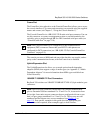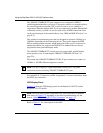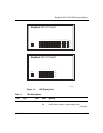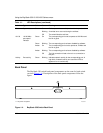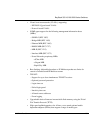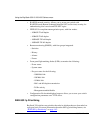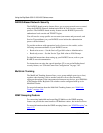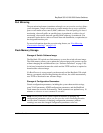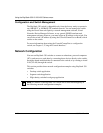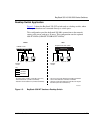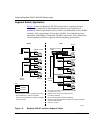
BayStack 350 10/100/1000 Series Switches
309979-A Rev 00
1-11
Virtual Local Area Networks (VLANs)
In a traditional shared-media network, traffic generated by a station is propagated
to all other stations on the local segment. Therefore, for any given station on the
shared Ethernet, the local segment is the collision domain because traffic on the
segment has the potential to cause an Ethernet collision. The local segment is also
the broadcast domain because any broadcast is sent to all stations on the local
segment. Although Ethernet switches and bridges divide a network into smaller
collision domains, they do not affect the broadcast domain. In simple terms, a
virtual local area network provides a mechanism to fine-tune broadcast domains.
Your BayStack 350 switch allows you to create two types of VLANs:
• Port-based VLANs
A port-based VLAN is a VLAN in which the ports are explicitly configured to
be in the VLAN. When you create a port-based VLAN, you assign a Port
VLAN Identifier (PVID) and specify which ports belong to the VLAN. The
PVID is used to coordinate VLANs across multiple switches.
• Protocol-based VLANs
A Protocol-based VLAN is a VLAN in which you assign your switch ports as
members of a broadcast domain, based on the protocol information within the
packet. Protocol-based VLANs can localize broadcast traffic and assure that
only the protocol-based VLAN ports are flooded with the specified protocol
packets.
BayStack 350 switches support up to 64 port-based or protocol-based VLANs.
When a switch port is configured to be a member of a VLAN, it is added to a
group of ports (workgroup) that belong to one broadcast domain. You can assign
different ports (and therefore the devices attached to these ports) to different
broadcast domains. This feature allows network flexibility because you can
reassign VLANs to accommodate network moves, additions, and changes,
eliminating the need to change physical cabling.
For more information about VLANs, see “
IEEE 802.1Q VLAN Workgroups” on
page 1-20
.



